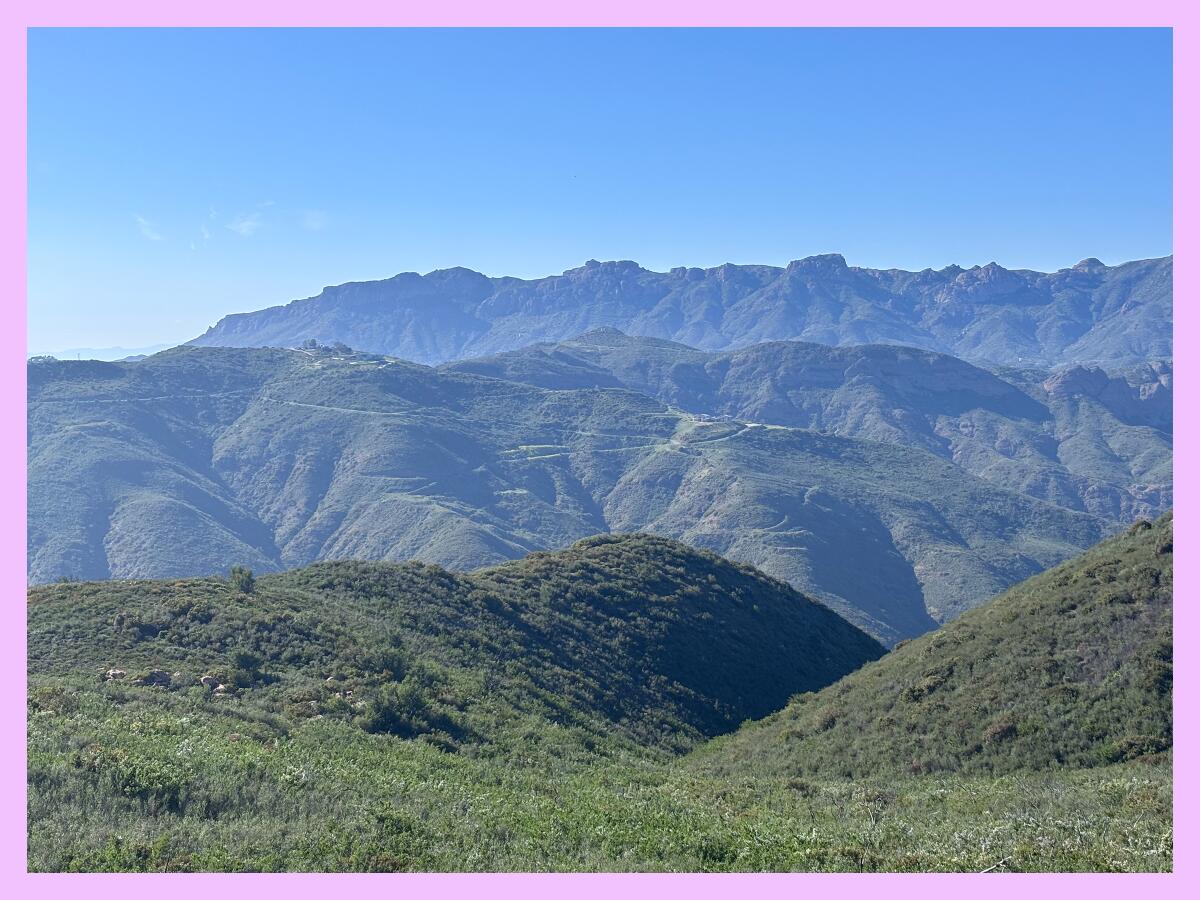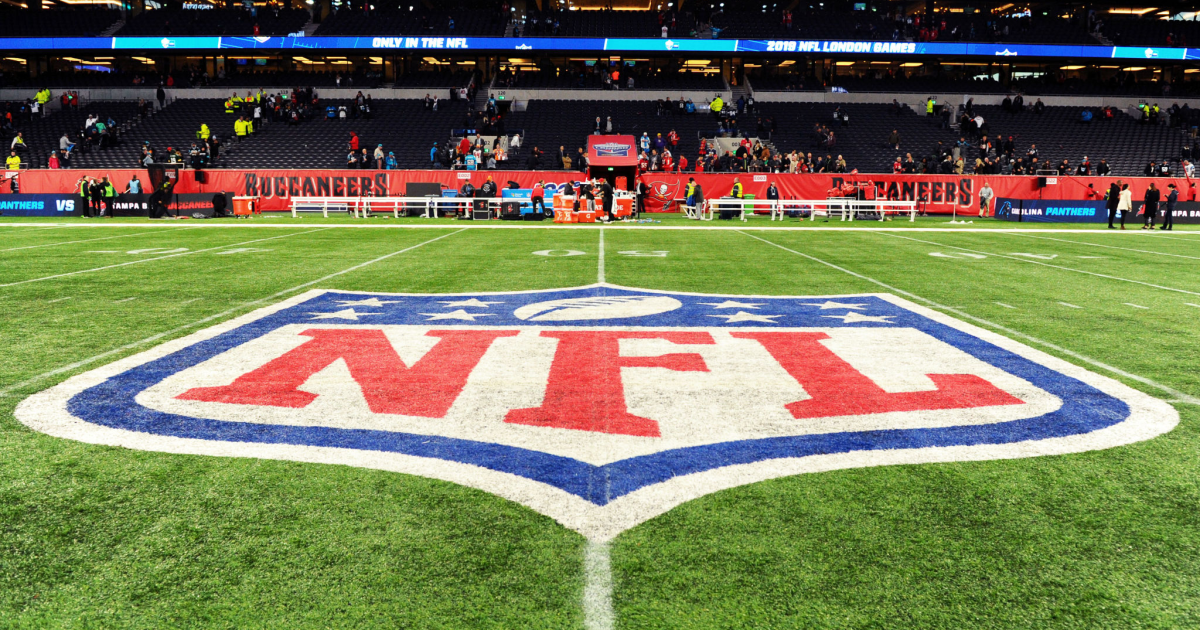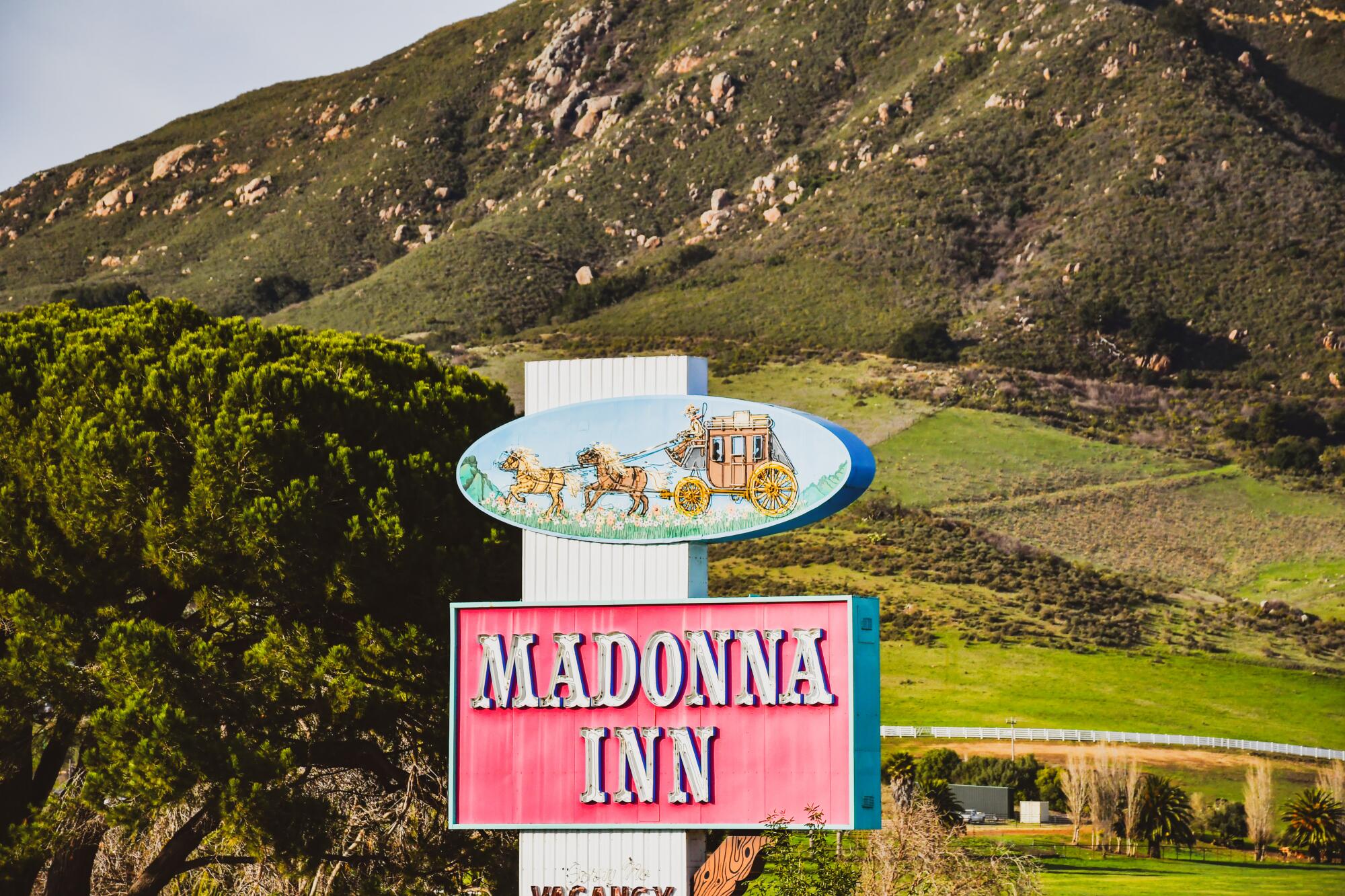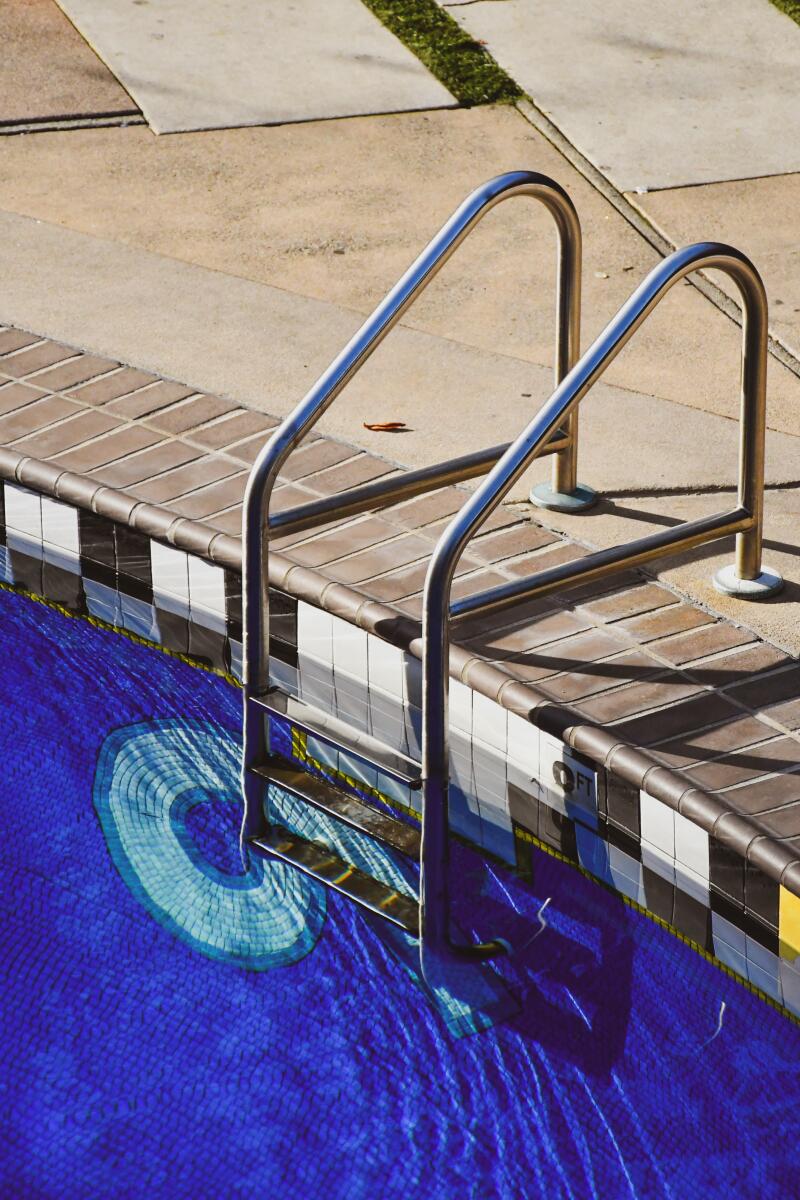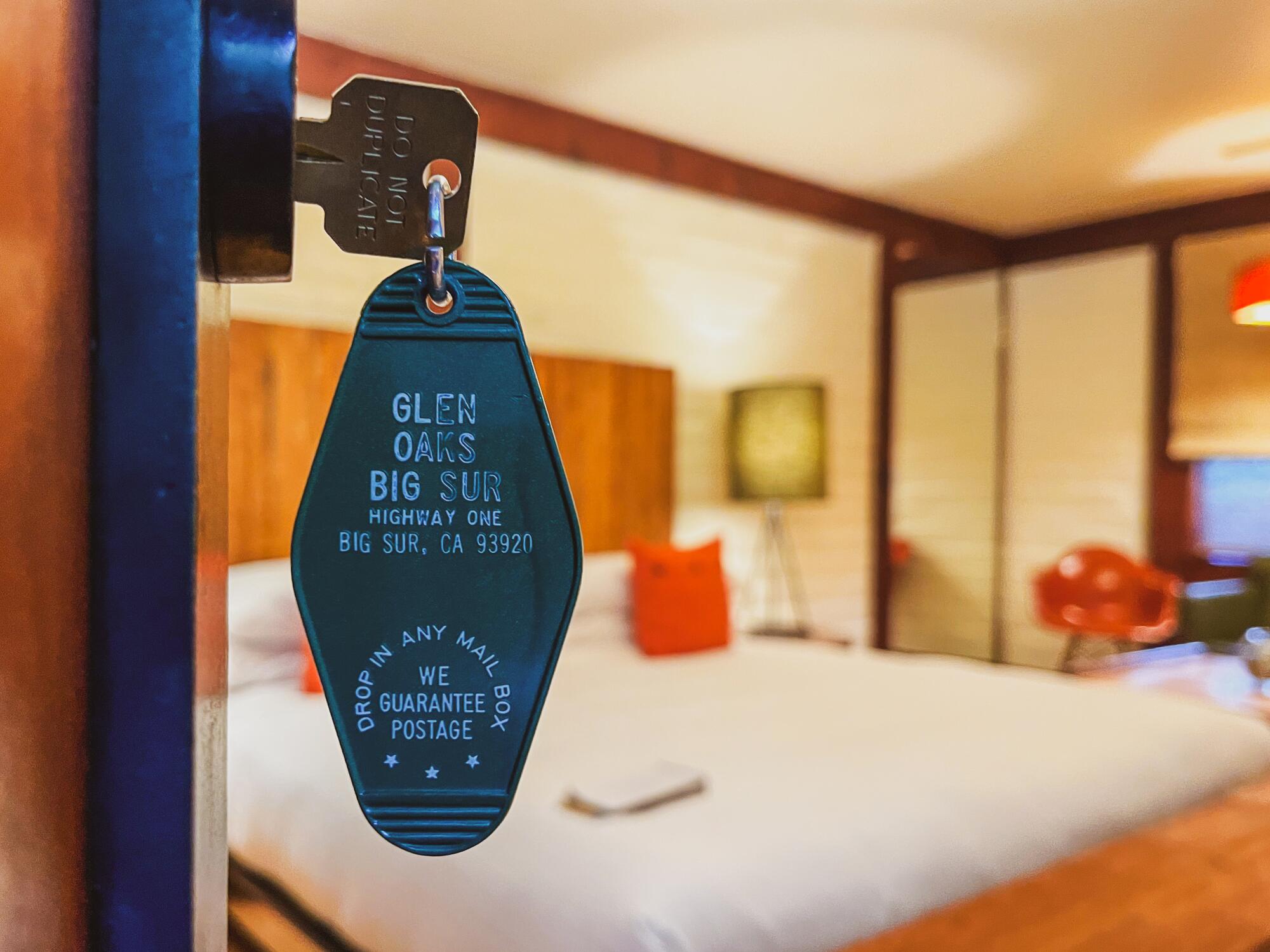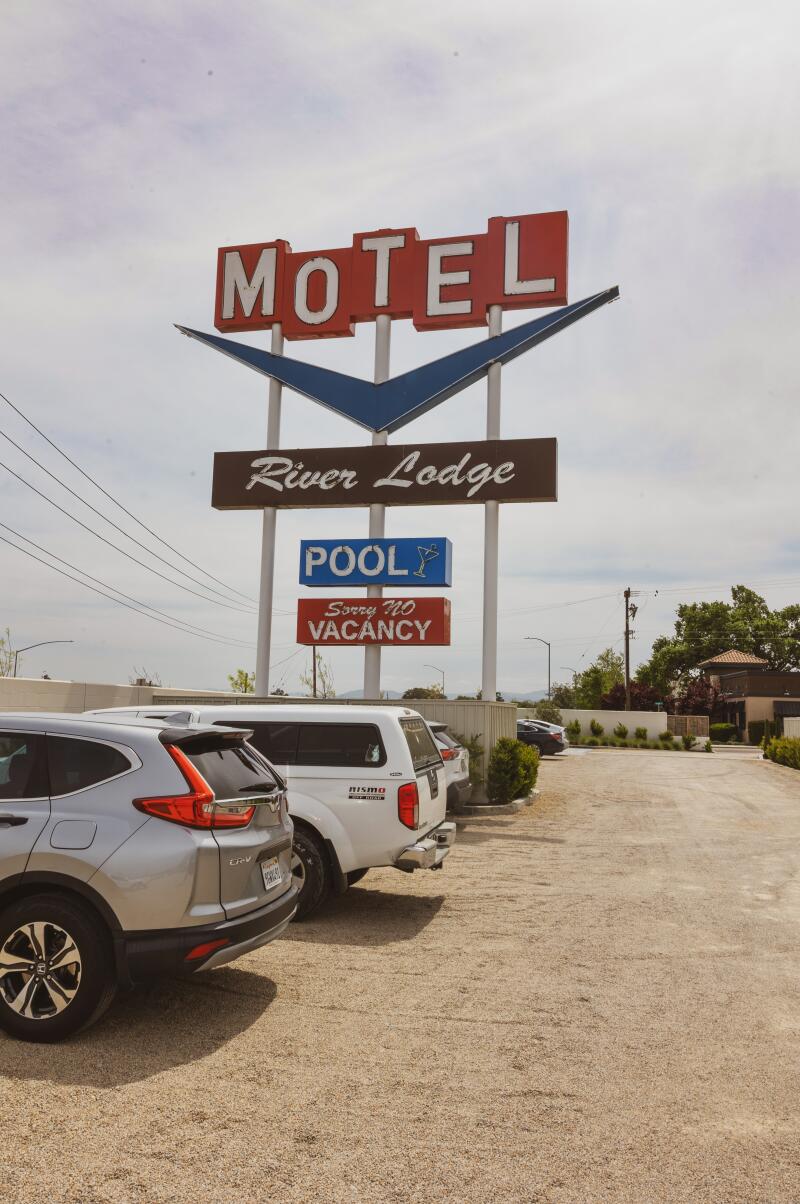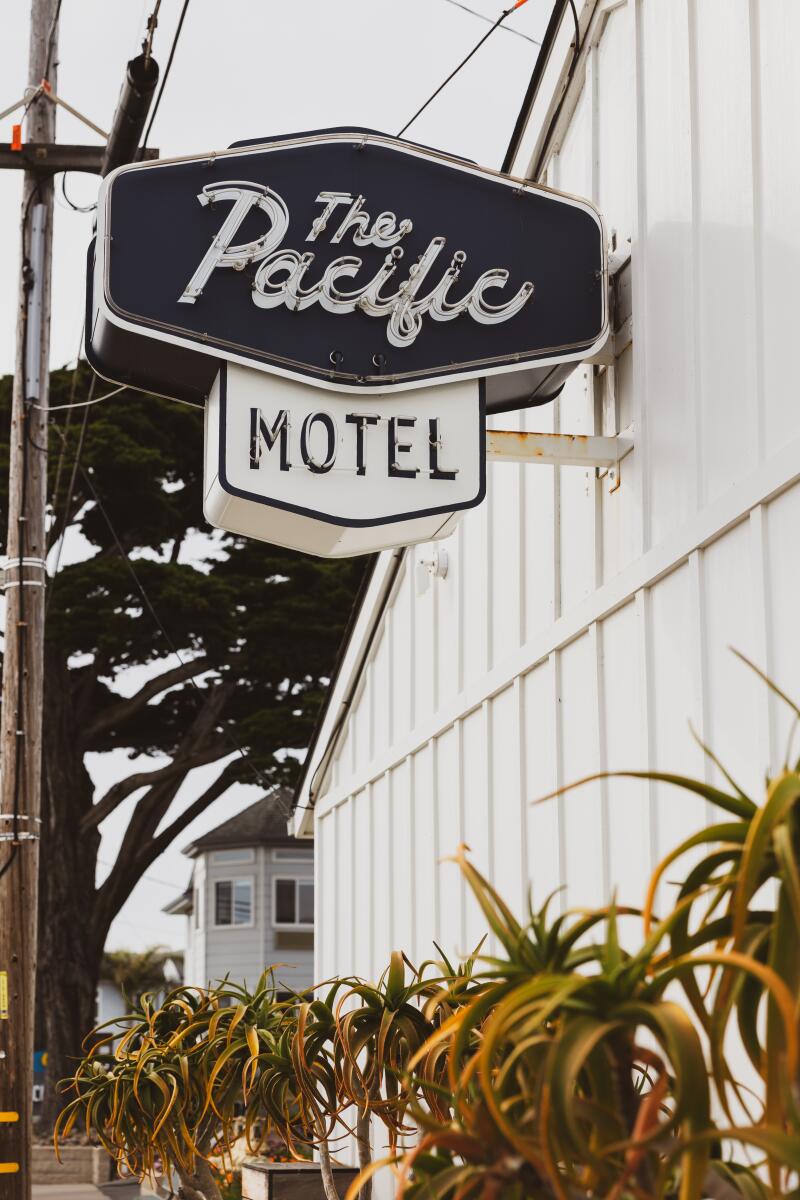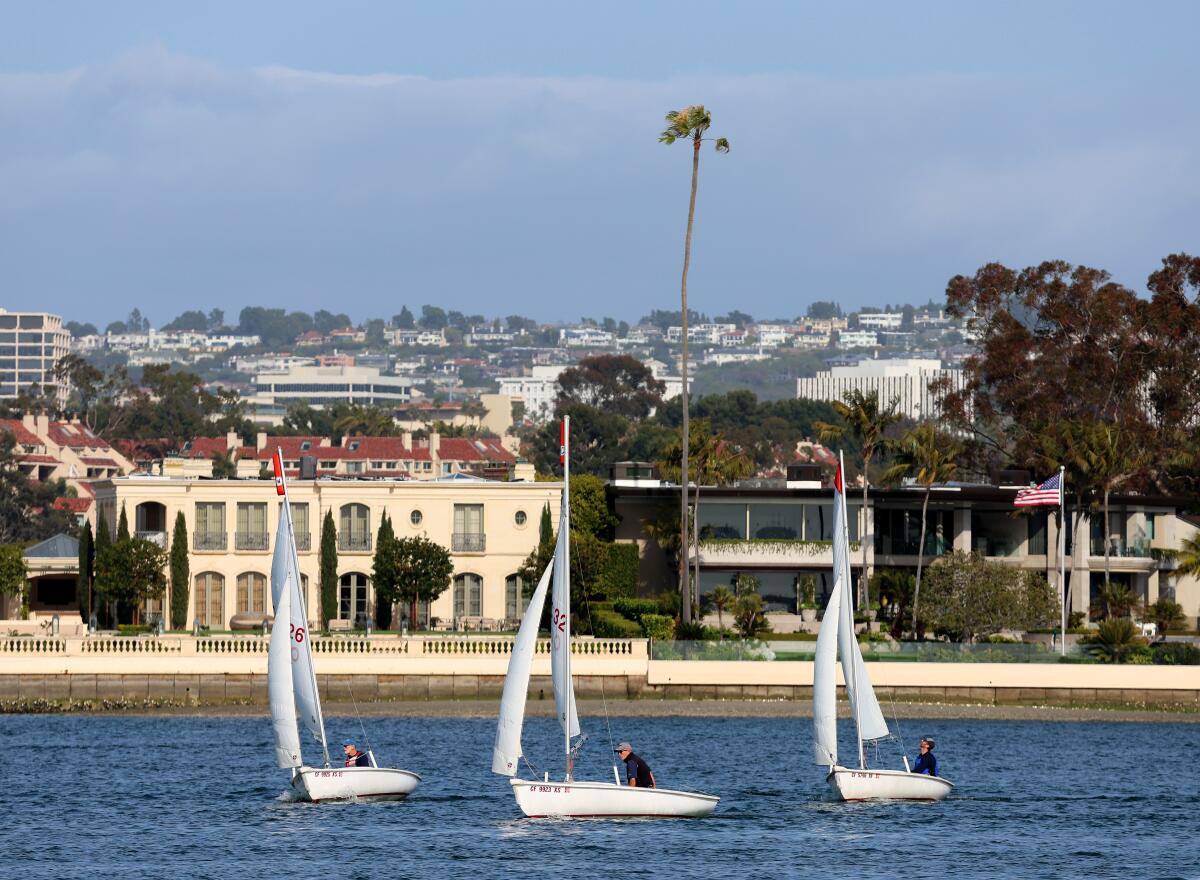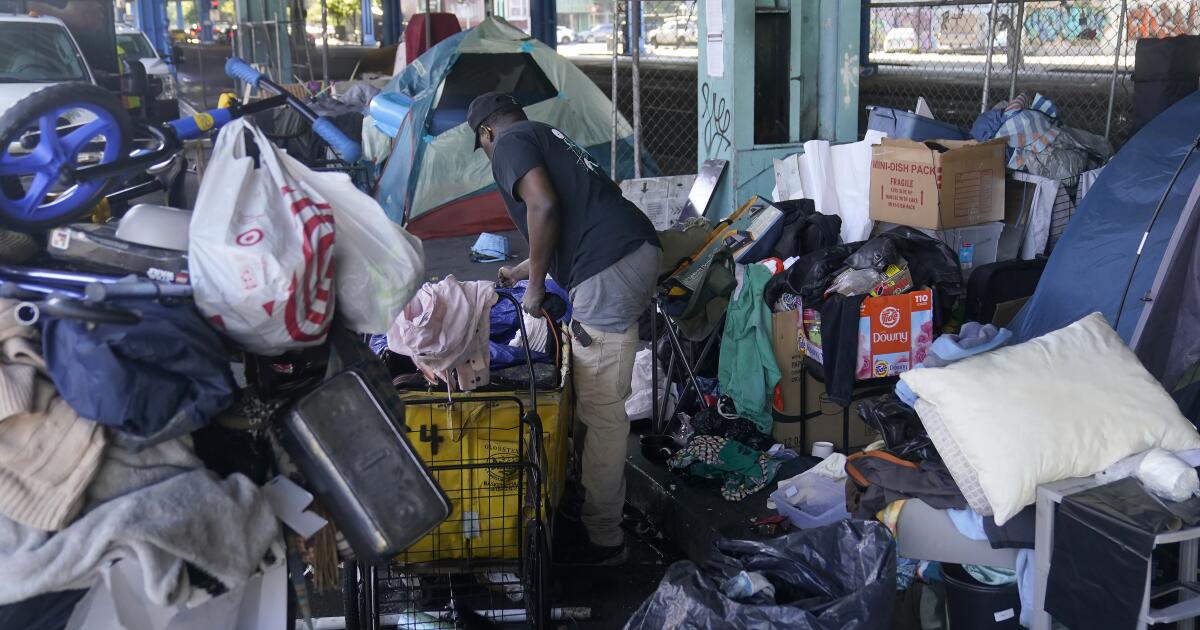Netflix’s ‘Forever’ features artwork of Black L.A. artists
L.A. has long been a beacon for the arts. So it’s only fitting that “Forever,” the Netflix series that showrunner Mara Brock Akil envisioned as “a love story within a love letter to Los Angeles,” celebrates local artists.
The Midcentury Modern home of Justin Edwards, one half of the couple whose love story informs the show — an adaptation of Judy Blume’s 1975 novel — is flooded with work from Black Angelenos.
“Local Los Angeles artists were important for me to put into the sets, and the Edwards family home, specifically, being collectors of Los Angeles art,” Akil, an L.A. native, told The Times.
Production designer Suzuki Ingerslev and set decorator Ron Franco are also Angelenos, which they said contributed to the cultural competency of their work on “Forever.” Although the writers’ strike made elements of their jobs difficult, both agreed that their experience on “Forever” was uniquely positive, in large part because of their curation of the art in the Edwards’ home.
“Sometimes art can really make a space and it makes a statement and it tells you who the character is,” said Ingerslev. “In this case, you really knew who the Edwards were — they curated art and they cared about where they live — and I thought that really made a big difference through the art and through the furnishings as well.”
Franco agreed, saying he had fun sourcing artwork from Black artists that matched Ingerslev’s color palette and also contained themes pertinent to the show.
“A lot of times the shows that you see now are just headshots and everything that we put up becomes a background piece that’s kind of blurred,” he said. “We are very lucky in that this camera really opened up, and you follow everybody through both of the [permanent] sets and you really feel a lot.”
Audiences noticed their effort, said Ingerslev, who’s been bombarded with questions about the artworks in “Forever,” which was just renewed for a second season.
Here are five local Black artists whose work are featured in the show.
Noah Humes, 31

Humes cites a book about artist and writer Romare Bearden that he received from Akil when he was 6 years old as the foundation for his worldview as an artist. (Humes’ mother was a casting director on “Girlfriends,” the 2000s TV series created by Akil, whom Humes calls “Auntie Mara.”)
“I look back [and] that’s what helped form and shape my energy with how I approach the canvas, wanting to tell the story of my community and different things that I see — social moments, political moments, historical remnants,” said the figurative painter.
Humes is drawn to bright colors that capture the vibrancy of his hometown of L.A. “Her” and “Mid City,” which feature prominently in the Edwards family’s media room in “Forever,” depict solitary figures against yellow backgrounds. The foliage in “Her” grows in Humes’ mother’s frontyard. “Mid City,” the neighborhood where Humes was raised, features the red-crowned parrots that wake him up every morning.


1. “Her” (Noah Humes) 2. “Mid City” (Noah Humes)
“I felt inclined to represent and show a certain subtlety of ‘We’re here, we’re centered, we’re always a focal point of unfortunate times, but also we can overcome things and become stronger than we have been,’” Humes said of the twin paintings, which he completed in 2020 after George Floyd’s murder and the national racial reckoning that followed.
Humes also credits his neighbors in L.A., a “system of Black excellence,” for positively influencing his artistry. Animator Lyndon Barrois (“Happy Feet,” “Alvin and the Chipmunks”) is his mentor, and members of the hip-hop collective Odd Future, including siblings Syd and Travis “Taco” Bennett, as well as Thebe Kgositsile — who uses the stage name Earl Sweatshirt — are his childhood friends.
Francis ‘Tommy’ Mitchell, 41

(Francis “Tommy” Mitchell)
Mitchell has been drawing for as long as he can remember, but it was a high school classmate pointing out the permanent nature of a ballpoint pen that led to his aha moment.
“You can erase graphite, you can paint over acrylic and oil,” said the Baltimore- and L.A.-based artist. “Ink is one of those things that I just think of, no pun intended here, it’s forever.”
Mitchell’s portraits feature individuals shaded with ink set against monochromatic acyrlic background. Because it is extremely time-consuming, most artists working in ink compose smaller, more intimate images, said Mitchell. In contrast, his portraits are huge. If the work were hung on the walls of a museum, the viewer may never notice the figure’s skin was drawn in ink and not paint.
“Going to museums or galleries as a kid, I would see these amazing European paintings, and I’m like, ‘Wow, these are amazing,’ but there’s no one that looks like me,” he said, of his desire to focus on portraiture.

“Francis R. of City College”
(Francis “Tommy” Mitchell)
The subject of “Francis R. of City College,” Mitchell’s painting featured in the Edwards’ dining room in “Forever,” is modeled after his father. For Mitchell, the work represents a young man with his whole life ahead of him. Making the painting in his Baltimore studio less than a mile away from City College, where his father attended high school, felt like a full-circle moment.
Seeing the work on television only adds to the significance.
“One of my goals is to always promote those who work in ink because it’s not a traditional medium,” he said, pointing to tattoo artists Jun Cha and Mister Cartoon as inspirations. “So for it to be seen on television, it lends credence to, ‘Hey, we’re doing something special as well.’”
Edwin Marcelin, 50
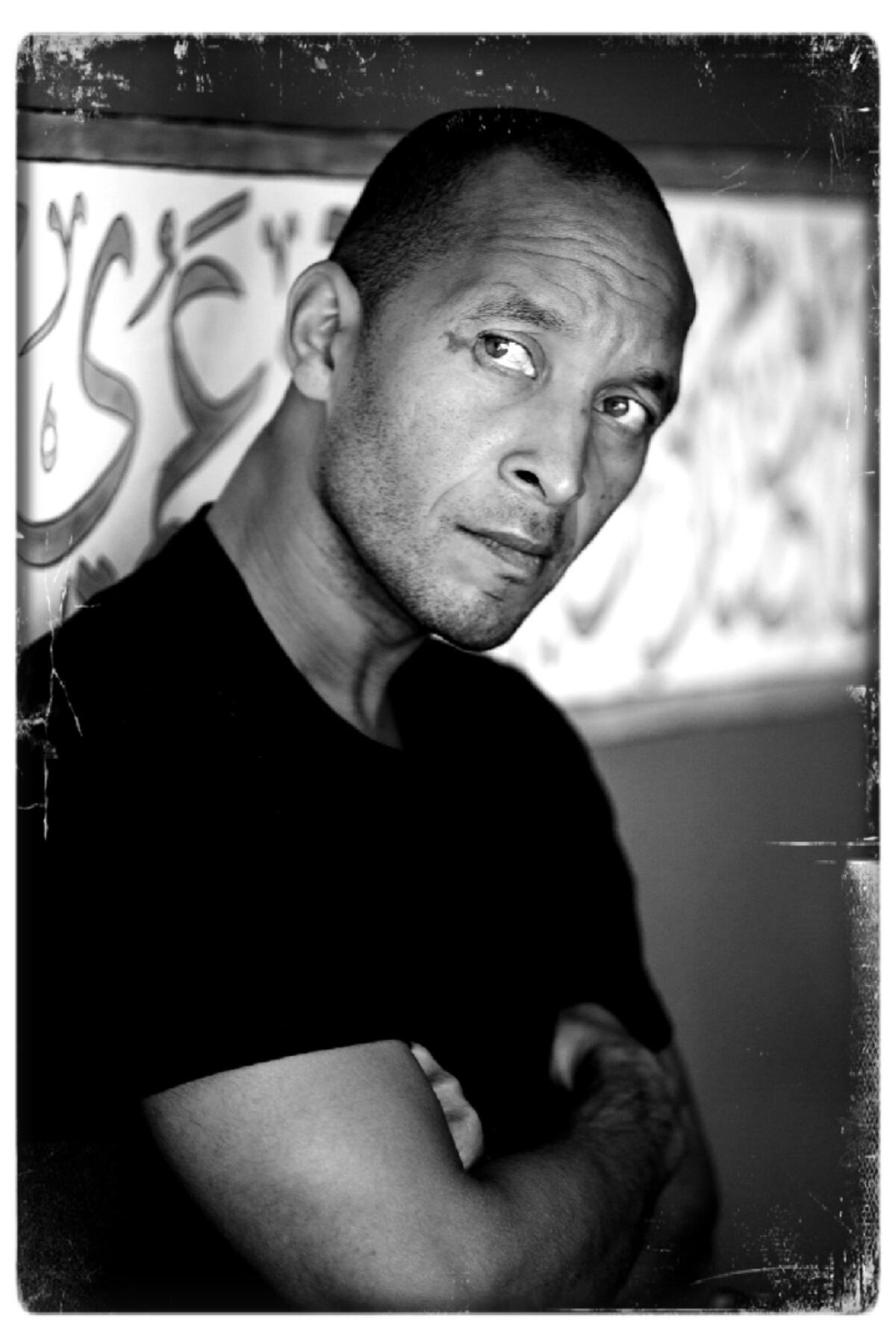
Marcelin’s first job as a teenager was at Stüssy, a Laguna Beach streetwear brand founded in the early 1980s. Minimalist graphic design, a trademark of Stüssy as well as brands Supreme and Undefeated, has always informed his art.
“Everything usually is about engagement, confrontation or affection,” said Marcelin. “Those are things that I tend to generate towards by using very minimal strokes.”
During his time at the California College of the Arts — then called the California College of Arts and Crafts — Marcelin was drawn to Bauhaus, a German school of art that melds functionality and design. Marcelin applies those abstract Bauhaus fundamentals and adds the element of movement.
“If it ain’t moving, it ain’t me,” said the L.A.-born-and-raised artist.
Marcelin said his emphasis on motion lends itself well to the screen — his piece “Clarity,” a dynamic painting of Michael Jordan taking flight, hangs in basketball-loving Justin’s bedroom in “Forever.”
“I think Black folks in Los Angeles are dynamic, so I try to keep dynamic images, people doing things, not standing there, and I think that translates to film very well,” said Marcelin.
“Clarity” is part of a 23-painting series titled “Black Jesus.” Each image in the series, which took Marcelin about five months to complete in its entirety, references Jordan, who Marcelin said is disappearing visually from pop culture. Case in point: He said his 19- and 16-year-old sons may recognize the Jumpman logo, but they wouldn’t instantly recognize an image of Jordan himself.
“There’ll be more basketball players, but I wanted to do something that was completely abstract representing him because he has so many moments that are fantastically beautiful,” said Marcelin.
Corey Pemberton, 34

With a background in collage, glassblowing and painting, Pemberton’s large mixed-media works — of a man singing into his toothbrush in the bathroom, a naked woman smoking marijuana in bed, a man devouring a plate of his mother’s food — are both intimate and mundane.
“At a certain point, I turned an interest to those who had been marginalized by society in some way, whether it was because of the color of their skin or their gender expression or their socioeconomic status, and developed an interest in depicting those people in a way that both celebrated them but also gave them some space to just exist,” he said.
Such themes of ownership and viewership are etched into Pemberton’s work. For example, he depicts the space and objects around his figures in vivid detail. Objects are important, he said, because they carry memories of “the people who created them or gave them to us or lived with them before us.”
Similarly, his painting “The Collector” celebrates “a young black person who’s making a concerted effort to own and conserve our culture, which is so often falling into the hands of people who don’t care about us on a deeper level.” And in many of Pemberton’s pieces, miniature renderings of his previous works can be found on the walls of his subjects’ homes.
“I think when you see a work presented that way, it sort of brings a heightened level of importance,” said Pemberton.

“I Used to Cook More”
(Corey Pemberton)
So it’s doubly significant that Pemberton’s work is on display in the wealthy Edwards’ home in “Forever.” The art in question, “I Used to Cook More,” can be found in the family’s kitchen and depicts Pemberton’s friend and fellow collector Jared Culp eating out of a white takeout container.
“We were talking about all of the takeout that we now consume as busy young Black creatives in L.A. trying to claw our way to the top of something,” said Pemberton.
But success in the art world has been easier to come by in L.A., where he relocated to after six years in rural North Carolina, said Pemberton.
“When I moved to Los Angeles, not only was I selling work but I was selling work to people with shared experience,” he said. “I was getting feedback that not only were these works that people wanted to live with, but they were works that people saw themselves reflected in, and that I was doing something important or meaningful to more people than just myself.”
Charles A. Bibbs, 77

Bibbs worked in corporate America for 25 years before becoming an artist full time. For Bibbs, art — in a crosshatching style, in his case — is all about communicating universal ideas.
“I mix that crosshatching with different colors and paint, and it’s just one layer on top of another until you get your desired effect,” Bibbs said of his “spontaneous” way of creating that’s “almost like magic sometimes.”
Like many Black artists, Bibbs chose his subject matter out of necessity. As a young man, he encountered few Black artists, yet innately understood the power of positive images of the Black experience, especially in the home.
“It’s a very honorable occupation because you’re giving people a part of you that is changing their lives in an aesthetic way,” he said. “All of those things play into people proud to be who they are.”

“Daddy’s Love”
(Charles A. Bibbs)
In “Forever,” viewers may catch a glimpse of “Daddy’s Love,” a drawing of Bibbs’ father and Bibbs and his sister as children, on the wall outside Justin’s bedroom. But this isn’t the first time his work has made it to the screen. Bibbs is credited with the Black Madonna artwork on the honey jar central to the plot of the 2008 film “The Secret Life of Bees.” He said the experience underscored the importance of art, which he said touches the “subconscious mind.”
“[My work] was part of the presentation of the movie and in some way or another may have helped them understand what that movie was really all about.”


